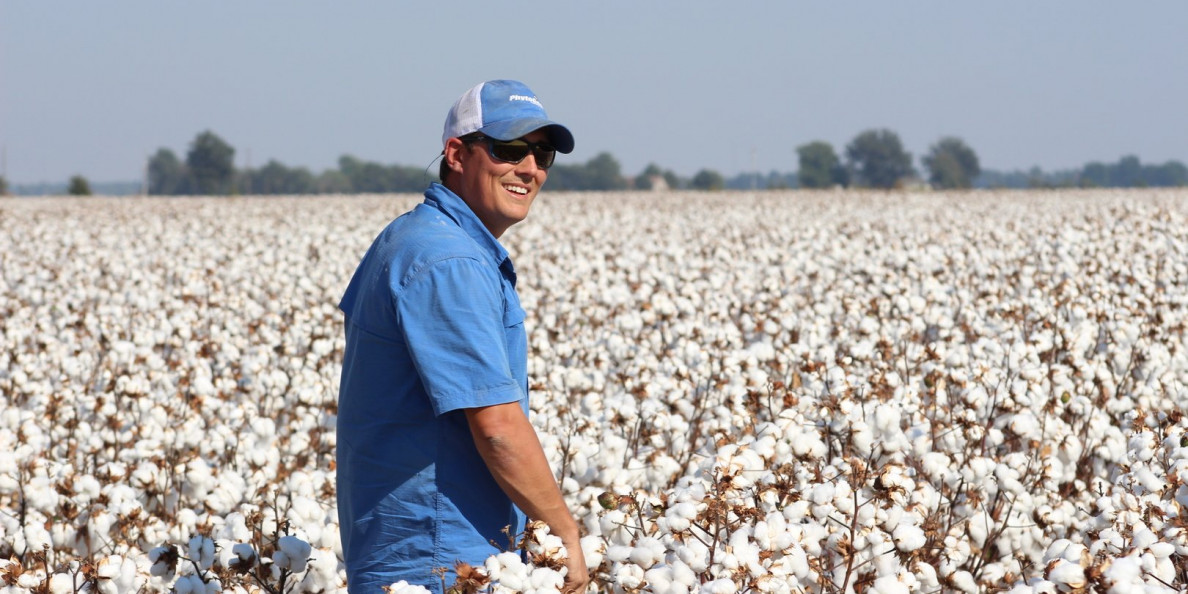Crop conditions vary across Cotton Belt.
The 2018 U.S. cotton crop is in pretty good shape heading into the critical Fourth of July fruiting window. At least, that’s what most of the usual barometers that market watchers follow have been saying.
But, depending on where you are in the U.S. Cotton Belt, those assessments may be misleading, according to Dr. Don Shurley, cotton economist and professor emeritus of cotton economics at the University of Georgia.
“No. 1, a large portion of the Texas crop, particularly on the High Plains, got planted, but a lot of it was perhaps dusted in and planted under much less than optimal conditions just to get it in before the crop insurance deadline,” he said. “The condition of that crop, and the conditions under which it was planted are very questionable.
“Secondly, in the Southeast, particularly in Georgia, we’ve been 10 to 15 points behind normal in planting over the past several weeks. And with the latest numbers I saw that came out this week, we’re still, I think, 10 to 12 percentage points behind normal.”
Speaking during a University of Arkansas System Division of Agriculture Webinar, Shurley said it’s not unusual for Georgia growers to have to plant cotton in June and then “be grateful for the long growing season” that’s typical for the state. (To view the webinar: https://bit.ly/2E2BEla.)
“But we’ve been behind average because of wet conditions as has much of the Southeast,” he said. “So, yes, much of the planting progress has been pretty much normal or ahead of normal, but, as I said that’s, that’s very misleading and we can’t go by that.”
Texas crop
Shurley said cotton growers only need look at one number — the 31 percent of the Texas crop that USDA’s National Agricultural Statistics Service says is in poor or very poor condition — to know the crop prospects are not as rosy as they might seem.
“Yes, the crop got planted, but, again, if you combine the fact that a lot of that crop was planted in certainly less than optimal conditions, and you look at the 31 percent poor to very poor condition rating in Texas, that’s what’s been driving the market and will continue to,” he said. “Look at Oklahoma, 22 percent of the Oklahoma crop is in poor to very poor condition.” Elsewhere, most of the crop is in fair to good condition. Growers don’t have too many worries in the Mid‑South and the Southeast in terms of crop condition. “But, again, the market’s been focusing, and rightfully so, on that large Texas crop and the fact that almost a third of it certainly is not in very good shape.”
When Shurley participated in the University of Arkansas Food and Agribusiness Webinar Series event, USDA’s Economic Research Service was estimating the 2018 U.S. crop at 19.5 million bales.
“I was a little surprised, given the deteriorating conditions of the crop, to have the same estimate as we basically did last month in May,” he said. “We have to keep an eye on that. I think right now most industry observers feel like the crop potentially is going to be less than that. And again, that’s part of what’s driving the market right now.”
Export projection
USDA’s last report before the webinar increased the export projection for the 2017 crop year up to 16 million bales. “This has been anticipated by most folks for quite a while,” he said. “This is the second month in a row that USDA has increased the export estimate.
“Back in May, we went from 15 million to 15.5 million and then, in this month’s (June) report, went from 15.5 million to 16 million. The point is, given the shape of the U.S. crop at this stage, given the fact that exports continue to be strong, that has lowered the beginning stocks. We’re going to be carrying in half a million fewer bales and that export estimate can even go higher.”
Cotton futures are also being driven by developments in other parts of the world. China’s production is currently expected at 26.5 million bales, which would be a million bales less than China produced this past year.
“Eventually, China’s going to have to come off this import quota,” he said. “As a matter of fact, when I came in this morning, one of the first things that came on my computer was a news alert that China has increased their import quota by another 800,000 tons. If I do my math correctly, that’s a little over 3 million bales.
“The other thing we’ll mention, India’s production is uncertain,” he noted. “I read a little news blurb a while back about the fact that their monsoon season’s a little bit late this year. There’s still time to come out of that. Their production isn’t expected to be the same as last year, but again, this is questionable.”


